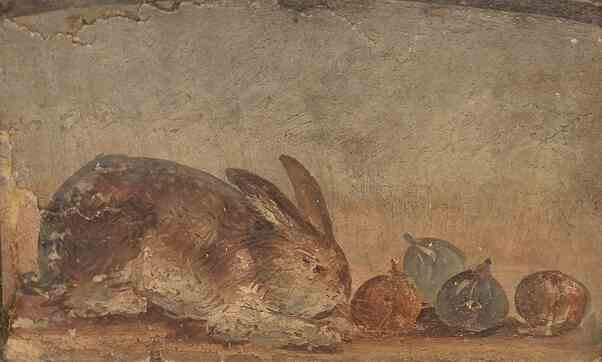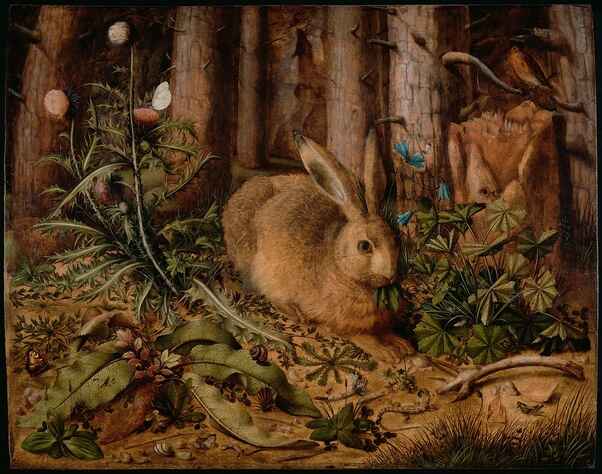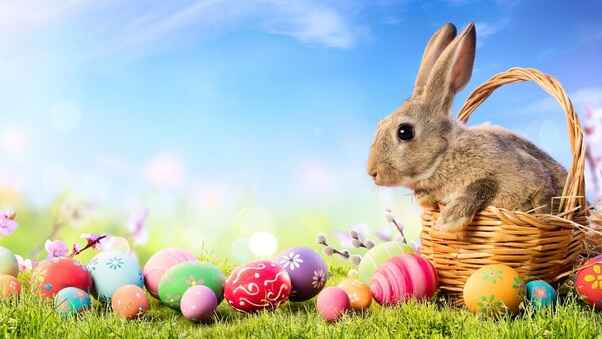The Easter bunny is a beloved symbol associated with Easter celebrations around the world. This charming figure, often depicted as a rabbit bringing Easter eggs, has a rich and complex history that intertwines various cultural, religious, and historical traditions.
To understand the origins of the Easter bunny one has to delve deep into ancient folklore, Christian traditions, and the commercialization of Easter in modern times.
Ancient Pagan Roots
Easter, Goddess of Spring
The story of the Easter Bunny begins with ancient pagan traditions. In pre-Christian Europe, many cultures celebrated the arrival of spring with festivals honoring various deities.
One of the most important figures was Eostre (or Ostara), the Anglo-Saxon goddess of spring and fertility.
According to legend, Eostre’s animal symbol was the rabbit, known for its prolific reproduction and thus its association with fertility.
The Rabbit as a Symbol of Fertility
Rabbits have long been seen as a symbol of fertility due to their high fertility rate. This made them natural symbols for springtime celebrations, essentially festivals of renewal and rebirth.
As Christianity spread throughout Europe, it assimilated and reinterpreted many pagan symbols and traditions, including the rabbit, which eventually evolved into the Easter bunny we recognize today.

Christian Adaptations
Easter and the Resurrection of Jesus
With the rise of Christianity, Easter became the central holiday celebrating the resurrection of Jesus Christ. However, the early Christian church was adept at blending pagan traditions with new Christian beliefs to make the transition easier for converts.
The spring celebration of Easter provides a natural counterpoint to the story of Christ’s resurrection, symbolizing new life and rebirth.
Inclusion of Eggs
Like rabbits, eggs are powerful symbols of fertility and rebirth. In many cultures, eggs were decorated and exchanged as part of springtime rituals.
Christians adopted this tradition, seeing the egg as a symbol of the tomb from which Jesus emerged. Over time, Easter became the bearer of these eggs, blending the ancient symbol with the Christian holiday.
Folklore and legends
German influence
The modern concept of the Easter Bunny is attributed primarily to German folklore. In Germany, children believed in the “Osterhesse” (Easter Hare), a mythical creature who laid colored eggs in nests prepared by children.
This tradition dates back at least to the 17th century and was brought to America by German immigrants in the 18th century, particularly to Pennsylvania.
American adaptation
In America, the tradition of the Easter Hare evolved into the Easter Bunny, and the practice of hiding eggs became a popular Easter morning activity.
The concept was further popularized in the 19th century, blending seamlessly with the emerging consumer culture. By the early 20th century, the Easter Bunny had become an established figure in American Easter celebrations.
Modern commercialization
The Easter Bunny in pop culture
The Easter Bunny has been commercialized to a great extent in modern times. Retailers and marketers have embraced the character, creating a multibillion-dollar industry around Easter-related products.
From chocolate bunnies to Easter egg hunts, the image of the Easter Bunny is ubiquitous in contemporary Easter celebrations.
The Easter Bunny and marketing
The commercialization of the Easter Bunny began in the early 20th century with the mass production of Easter-themed goods. Companies such as Cadbury and Hershey capitalized on the holiday by creating chocolate eggs and bunny-shaped candies.
Today, the Easter Bunny is central in marketing campaigns targeted to children and families, ensuring the character’s enduring popularity.

Cultural significance
Symbol of joy and innocence
For many people, the Easter Bunny represents joy and innocence. The character is often depicted as a gentle, playful creature, bringing joy to children.
Easter egg hunts and other activities involving the Easter Bunny promote a sense of community and shared celebration.
Global variations
While the Easter Bunny is most closely associated with Western cultures, different countries have their unique traditions involving rabbits or similar creatures.
For example, in Australia, there is a movement to replace the Easter Bilby (a native marsupial) to raise awareness about the conservation of endangered species.
Conclusion
The origins of the Easter Bunny are a fascinating mix of ancient pagan symbols, Christian traditions, and modern commercial practices. From the fertility rites of early European pagans to the charming figure celebrated in contemporary Easter celebrations, the Bunny has become a beloved symbol of springtime renewal and joy.
Its journey through history demonstrates the adaptability of cultural icons and the enduring human need for stories that connect us to the cycles of nature and the hope of rebirth.
FAQ
What is the Easter Bunny?
The Easter Bunny is a folkloric character and symbol of Easter, often depicted as a rabbit bringing Easter eggs. It is celebrated in many cultures around the world, especially in Western countries.
How did the Easter Bunny become associated with Easter?
As Christianity spread, it absorbed many pagan traditions. The festival of Eostre, which celebrated spring and renewal, merged with the Christian celebration of Easter, commemorating the resurrection of Jesus. The rabbit, a symbol of fertility, became associated with these springtime festivities.
Why is the Easter Bunny associated with eggs?
Eggs are ancient symbols of fertility and rebirth. Early Christians adopted the egg as a symbol of resurrection, and eventually, the Easter Bunny became the bearer of these eggs. This tradition probably originated from German folklore, where the “Osterhess” or Easter Hare brought eggs to children.
How did the Easter Bunny tradition spread to America?
German immigrants brought the tradition of the “Osterhess” to America in the 18th century. The practice of the Easter Hare laying eggs in nests prepared by children was adopted and evolved into the American Bunny tradition.
What are some common Easter Bunny traditions?
Common traditions include the Easter egg hunt, where children search for hidden eggs and find chocolate bunnies and other gifts. These activities are often part of broader Easter celebrations, including church services and family gatherings.
How has the Easter Bunny been commercialized?
He has become a central figure in Easter-related marketing and consumerism. Companies produce and sell a wide range of Easter-themed products, ranging from chocolate eggs to bunny-shaped candy, forming an important commercial aspect of the holiday.
Are there different Easter Bunny traditions around the world?
Yes, while the Easter Bunny is primarily a Western tradition, other cultures have unique variations of it. For example, in Australia, there is a movement to replace the Easter Bunny with the Easter Bilby to promote awareness of native wildlife conservation.
Does the Easter Bunny have any religious significance?
The itself has no direct religious significance. However, it is associated with Easter, a major Christian holiday celebrating the resurrection of Jesus Christ. The bunny symbolizes themes of fertility, renewal, and new life, which complements the religious message of resurrection.
Why is the rabbit a symbol of fertility?
Rabbits are known for their high fertility rate, which makes them a natural symbol of fertility and new life. This trait made the rabbit a fitting symbol for springtime festivals celebrating rebirth and renewal.
How is the Easter Bunny incorporated into modern celebrations?
Modern celebrations often include community events such as Easter egg hunts, parades, and visits from costumed Easter bunnies. These activities are designed to engage children and families in the festive spirit of Easter.
What are some fun facts about the Easter Bunny?
- The largest Easter egg hunt involved over 500,000 eggs.
- The idea of the Bunny laying eggs may seem strange, but it stems from the ancient symbolism of eggs representing new life.
- In Switzerland, a cuckoo lays Easter eggs instead of a rabbit.
